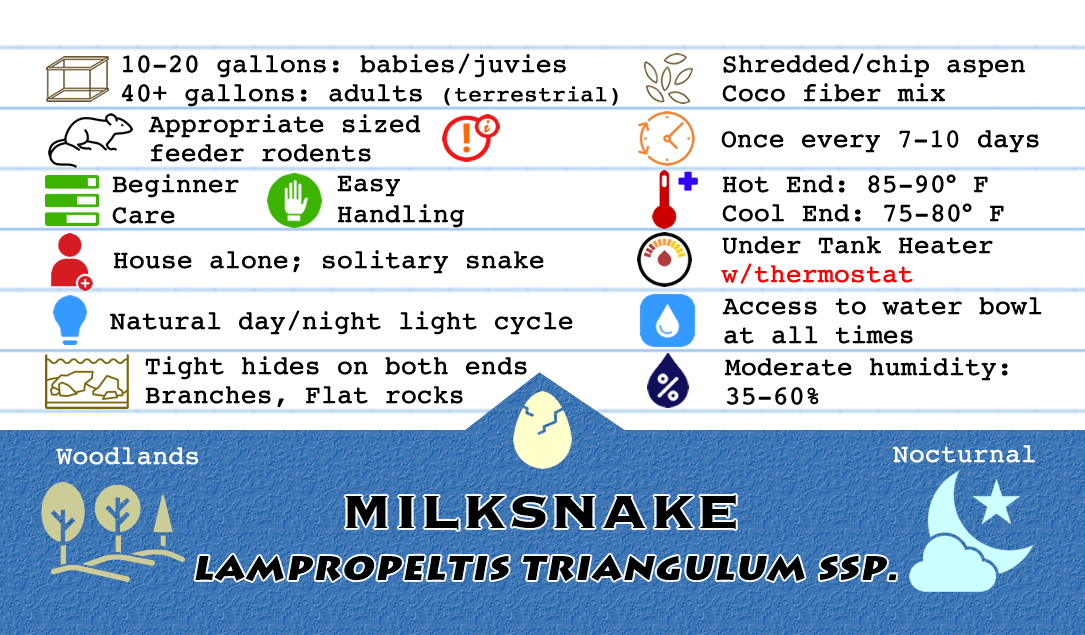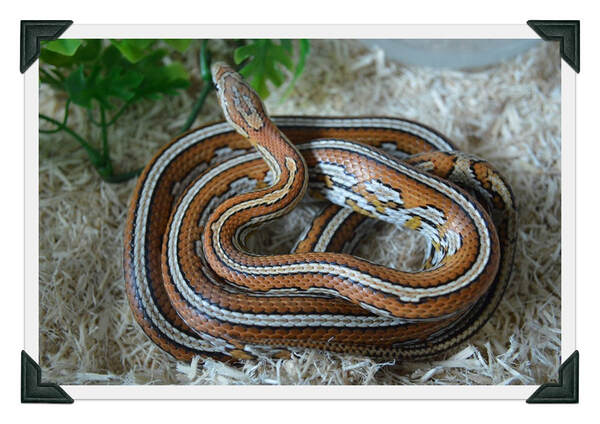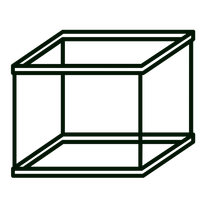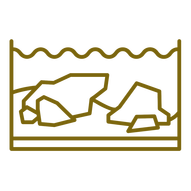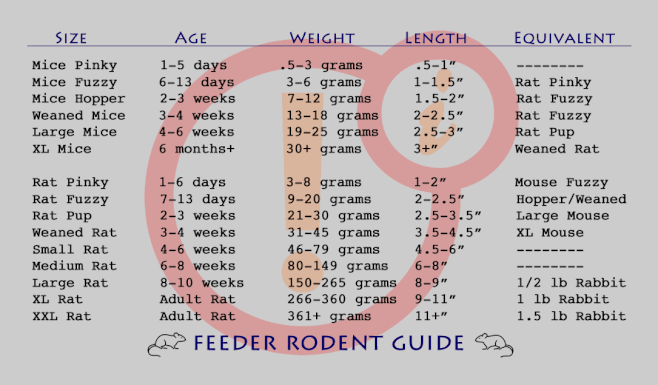Lampropeltis triangulum ssp. - Milksnake
Milksnakes are a slender, quick moving, colorful colubrid. Most are docile beginner snakes that come in a variety of morphs and are type of Kingsnake. They inhabit a range of areas from wooded to grassy, dry to humid. There are more than two dozen subspecies. Some of the more popular ones include Black, Central Plains, Eastern, Honduran, Louisiana, Mexican, Nelson's, New Mexico, Pale, Pueblan, Red, Sinaloan, and Stuart's. Their size can vary greatly, so be sure to research exactly what size your chosen milksnake will grow to and adjust their care accordingly.
One interesting face about milksnakes is that despite not being venomous, they have evolved to use Bayesian mimicry as a defense mechanism, mimicking the colors of other venomous snakes to scare of their shared predators, including humans.
One interesting face about milksnakes is that despite not being venomous, they have evolved to use Bayesian mimicry as a defense mechanism, mimicking the colors of other venomous snakes to scare of their shared predators, including humans.
|
Bringing Your New Pet Home
When you bring your new snake home, you should already have a quarantine tank set up and ready to go. Place fresh water in a bowl in the tank, fresh substrate and offer food, but be aware it is completely normal for them to refuse food for the first couple days, or even longer. You should keep this new snake in a separate area from any other snakes you may have for 90 days, to ensure there is nothing it could spread to your other animals. Check for mites as they are very easily spread to other snakes. Monitor its eating and fecals as they may be strange for up to a couple weeks, but this is due to a new diet, supplements, and environment. It is recommended you do not handle your new snake for the first 24-48 hours and keeping it to a minimum until it has started eating on its own. Always keep in mind, your new animal is in a new tank, with new decor/dishes/hides, and new faces watching them. They need time to become acclimated to it all. After this quarantine process, they can be safely introduced to their permanent enclosure if it's not already. Be sure to wash your hands before handling any other snake during this time. |
|
Enclosure Depending on your need, there are a couple different ways to house a corn snake. For the single snake owner a glass aquarium with screen lid can be used, or a front opening glass terrarium. Generally you want to have 10-20 long gallons of enclosure for a baby or juvenile. 40 gallon breeder sized tanks work well for a full grown adult. More space is always better for these active snakes. An additional way to house is a rack system with tubs, most commonly used by breeders to use their space most efficiently. Whatever type of enclosure you choose, be sure it is secure; snakes are escape artists and will use any opportunity to get out and explore. Screen tops with secure clips can be purchased for glass aquariums. Other enclosures should clip securely closed. |
|
Substrate
Corn snakes love to burrow, so a nice deep substrate is preferred. Shredded or chipped aspen is an ideal choice as it is low dust and secure for your snake to burrow in. If you live in a drier area, a more humid substrate may work better, such as eco earth or jungle mix. Spot clean weekly and completely replace all bedding every few months. |
|
Heating
Corn snakes are cold blooded, so they rely on their environment to regulate body temperature. It is important that the temperature be around 82-85 on one side of the tank, while the other side of the tank be in the high 70s so the snake can thermoregulate by moving from one side of the tank to the other. The heat source should come from below the enclosure to aid in digestion and should take up approximately 1/3 of the bottom of the outside of the enclosure. Never put an under tank heater inside the enclosure. With a glass enclosure an under tank heater is best, but for a rack system heat tape is most efficient. A thermostat should be used with any heat source.
|
|
Cage Decor
Since they are inactive during the day time, they need to have places to hide from the daylight to sleep. These hides can be as fancy as you prefer, from something store bought to an overturned plastic container with a door cut out. There should be at least 2 hides, one on the cool side and another should be kept on the warm side. If your snake is having issues shedding, a moist hide can be used to help bring the humidity up. Keep a hide with damp paper towels or sphagnum moss on one side and they will use it as needed. Corn snakes are semi-arboreal, so low branches, rocks, cork pieces and fake plants can be added to the tank for visual appeal and for your snake to explore and use to aid in shedding! |
|
Humidity and Shedding
Access to the moist hide mentioned in decor to help them aid in shedding will keep the humidity level at an appropriate level if they are having issues with stuck shed, but is not usually necessary. Levels should be around 50-60%. Snakes will shed their skin as they grow. You’ll notice their color will appear dull when they are about to shed and their eyes will take on a blue tint. They cannot see well during this period of time, so may refuse food and strike in defense. A snake should shed in one complete piece - if they shed in pieces or have pieces stuck to them, your humidity needs to be adjusted. |
|
Feeding Corn snakes are carnivores and kill their prey by constricting it. Typically, their diet consists of mice. Depending on the breeder and how they were raised, some may only take live prey. If this is the case, be sure to never leave your snake alone with the live prey as they can be severely injured. Frozen/thawed prey is the best choice for the average pet owner as it is readily available at most pet stores. Thaw the prey to room temperature by soaking in a bowl of lukewarm water, or leaving it out for a few hours to thaw. Never use a microwave to thaw food for a snake. Size of prey offered depends on the size of your snake. The size of the prey item should approximate the width of the snake at the largest part of its body. As your snake grows, so should the size of the prey offered. Most adult snakes eat every 10-12 days. Babies and juveniles need to eat more often. The best way to feed a snake is using a tongs to dangle the prey in front of them until they strike for it. Feeding at night will greatly improve the chances of a successful feed. |
|
Handling
Corn snakes are usually open to being handled and with regular contact, can become very tame. Hold your snake in your hands securely and let them explore. Never handle a snake that is about to shed unless necessary, as their eyesight is compromised and the chances of being bitten or struck at are higher. Do not handle your snake for 2-3 days after feeding to allow them to properly digest their meal. Handling too soon can cause regurgitation. Corn snakes are a fast moving, active snake, especially as babies! If you are unsure about taking your snake out of the enclosure, snake hooks or tongs are handy for aiding in handling. Be sure to support the entire snake, using the hook to support the area closest to the head and your hands to support the rest of the body. |
|
Shopping List
|
